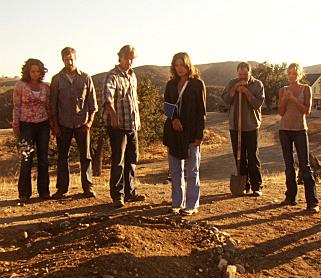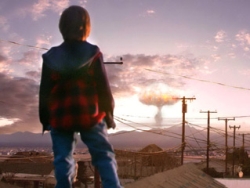It may sound unthinkable — the idea of denying life support to some people in a public health disaster like an epidemic. But a new report says doctors, health care workers and the public need to start thinking about it.
The report, by New York State health officials, grows out of the work of a group formed in 2006 to plan for the possibility of an influenza pandemic. The group focused on the breathing machines called ventilators.
Right now, there are enough ventilators to go around. But in an epidemic, there could be a severe shortage of machines and, more important, doctors and nurses to run them. At that point, the new report says, doctors and hospitals would have no choice but to start taking some people off the machines so that others could live.
Removal “is absolutely the crux of the problem,” said a lead author of the study, Dr. Tia Powell, who has spent much of her career studying medical ethics. “There are people who might survive who won’t get a chance at a ventilator if someone who is likely to die even with a vent is using it.”
Before an epidemic strikes, the report says, the public should confront the issue to ensure that any such triage decisions reflect community views, as well as ethical and clinical standards.
“It’s not really a technical solution,” said Dr. Powell, who directs the New York State Task Force on Life and the Law. “It’s values. And the people are the experts on that.”
The report, “Allocation of Ventilators in a Public Health Disaster,” appears in the March issue of Disaster Medicine and Public Health Preparedness, a quarterly journal of the American Medical Association.
The project began in response to outbreaks of bird or avian flu, H5N1 influenza, in Asia. Although just a few hundred people are known to have contracted the disease so far, most of them died of it. So a widespread outbreak would overwhelmingly strain the health care system, not just in machinery, but also in the doctors, nurses and other health care personnel needed to use it.
The report says triage, separating those who will receive treatment from those who will not, should largely depend on the prognosis for recovery, not on factors like underlying health or age.
“We are not interested in quality of life,” Dr. Powell said in an interview. “We are just interested in whether you are able to survive this particular crisis.”
Anyway, she said, age has not been “a particularly sensitive discriminator for survival” in H5N1 flu. Many of its victims have been young.
Though allocating scarce resources is a perennial topic among ethicists and health officials, the authors say their guidelines are the first of their kind in the nation and could be a template for rationing in other catastrophes.
“This kind of thinking, as scary or even horrifying as it may seem, is absolutely critical and is much better done now than on the fly in the middle of a pandemic,” said Dr. Art Kellerman of Emory University, an expert on emergency medicine.
Dr. Kellerman, who was not connected to the study, said that a crisis like a flu pandemic was a matter of when, not if, and that he was “frustrated with people who want to pretend that it won’t be an issue or simply pass the buck to the emergency care physician.”
The guidelines confront that issue explicitly, recommending the appointment of “triage officers” to make ventilator decisions based on information about the number of incoming patients and their conditions, but who will not be involved in caring for them. If doctors and nurses caring for the sick must also make these triage decisions, the report says, the resulting stress can be “corrosive.”
Under the guidelines, “the person who is providing your direct care is not going to be the person who decides whether you stay on the vent or go off,” Dr. Powell said. “You need to know they are advocating for you. They cannot be looking out the door at how many people are waiting for care.”
Dr. Powell noted that rationing — or as she said it is called, “providing alternative standards of care” — was repellent to many Americans. In the early days of kidney dialysis, when dialysis machines were scare, “we were so uncomfortable with that as a nation we essentially made dialysis available to everyone who needs it,” she said. Similarly, she said, much effort has gone into building a fair system for allocating organs for transplant.
But that work “does not really apply to this kind of crisis situation,” she said. “This is a genuine emergency. You are not going to have time to do a careful sorting out, by list.”
So the panel began work by identifying crucial factors for rationing, including these:
- Recognizing that patients deprived of mechanical breathing assistance should continue to receive care.
- Using scarce resources like mechanical ventilators to save the greatest number of lives while continuing to care for patients individually. “As the number of affected patients multiplies, accommodating these two goals will require making increasingly difficult decisions,” the report says.
- Planning, so as not to leave decisions in a pandemic “to exhausted frontline providers.” Public health agencies must accept this obligation, the report says, “despite the difficulties inherent in planning.”
- Applying any plan broadly and consistently.
- Publicizing guidelines, seeking public comments and incorporating suggested revisions.
For ventilators, the group established “exclusion criteria,” conditions that would classify people ineligible for ventilators. It includes recurrent cardiac arrest, metastatic cancer with a poor prognosis, severe burns, end-stage organ failure and neurological conditions with high expected mortality.
The report cites “much public comment” about whether it would be better to emphasize ventilator access for children rather than the elderly. And it lists kidney failure as a reason to withhold ventilator support, in part because patients needing dialysis already place increased demand on scarce nursing resources.
When a ventilator is removed from a patient who depends on it, the report says, health workers should follow their institutions’ existing guidelines for withdrawing life support and provide palliative care like sedation, so patients do not experience “air hunger.” In an epidemic, the report adds, “facilities should prepare for a significant increase in demand for palliative care.”
The guidelines are online at http://www.health.state.ny.us/diseases/communicable/influenza/pandemic/ventilators/.
Dr. Powell said she had discussed them at meetings of professional societies and at medical centers around the state and added that she hoped the new report would draw more public attention. One likely step, she said, would be to hold discussions by focus groups.
“The guidelines are intended to reflect the values of New Yorkers,” she said. “And if they don’t, we want advice on how to revise them.”
Dr. Kellerman of Emory said the report should not be allowed to gather dust. “It is important that those guidelines be out there and discussed and struggled with right now,” he said.
Many hospitals already struggle with chronically scarce resources like intensive care beds, he said, and in a pandemic the problem would be far, far worse.
Dr. Kellerman said he was not optimistic. In the first place, he said, the public tends to “tune out” on such disturbing questions. Or, he said, they may accept the guidelines only “until it’s their family member. Then people often feel very differently.”
http://www.nytimes.com/2008/03/25/health/25vent.html?ref=science













